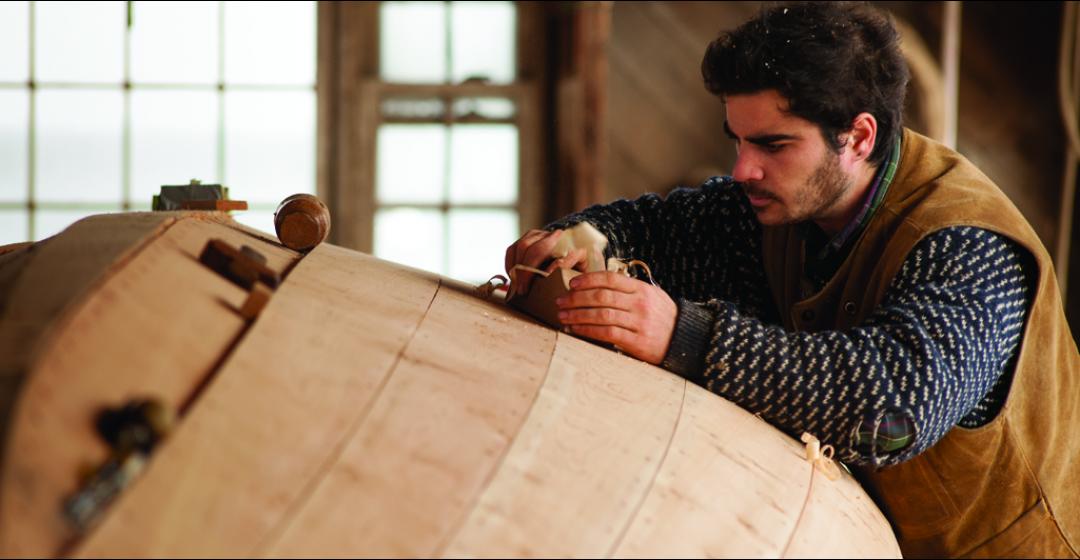Those flashy French. As legend has it, if it weren’t for the flamboyant formal wear flaunted by French aristocracy in the seventeenth century, the waistcoat – or vest, as we more commonly know this multipurpose, sleeveless outer garment today – may never have risen to such widespread popularity. On October 8, 1666, diarist Samuel Pepys reported that King Charles II of England, Scotland, and Ireland “hath yesterday in council declared his resolution of setting a fashion for clothes which he will never alter. It will be a vest, I know not well how; but it is to teach the nobility thrift.”
Despite its early function as a neutralizing gesture, the vest quickly took on a life of its own, and by the eighteenth century waistcoats were worn in elaborate styles and bold colors by men of the upper classes. Until, ironically, the French intervened again. As anti-aristocratic principles of the French Revolution took hold, wardrobes among the threatened nobility became necessarily less ostentatious. Vests quickly fell out of favor, or were buried beneath layers of suit jackets or overcoats.
It was this shift from flashy front piece to supporting suit staple that gradually introduced the vest as a more durable, and less showy, member of the outerwear family, particularly in colder climates.
On this side of the pond, from coast to northern coast, manufacturers were beginning to experiment with creating quality products essential to surviving harsh winter conditions. In 1830 English immigrant John Rich built his first woolen mill in Plum Run, Pennsylvania, and his growing company, Woolrich, was soon supplying its now classic wool vest to railroad workers as the first tracks were laid across the state.
Half a century later, Nebraskan homesteader C. C. Filson moved to Seattle and opened his first store, Pioneer Alaska Clothing and Blanket Manufacturers. It was his aim to gear up the gold-rushing go-getters as they passed through the state en route to finding their fortunes.
By the 1960s Filson’s reputation for manufacturing quality goods had spread across the nation and beyond. So it’s no surprise that here on this very Island, one young farmer was already a fan.
When Clarissa Allen inherited her family’s farm in 1975, she and her husband, Mitchell Posin, gradually began introducing a line of thick, warm blankets, made of wool sheared from the farm’s own sheep. A few years later, Posin, a longtime lover of vests, had an idea.
“I was always trying different vests,” Posin recalled. He was particularly loyal to his Filsons, but had one adaptation in mind: “More pockets.” Posin, who at the time also worked as a carpenter, was primarily looking for places to stash his pencils, so that they would be at the ready when making notes or marking things up for quick cuts.
With a few guidelines – durability, warmth, and those pockets – Posin and Allen consulted with Valerie Beggs, a then-local designer at the helm of her own successful clothing company, Woodland Waders. Soon, the three had a prototype for the Allen Farm vest, and had lined up a small manufacturer in Fall River, Massachusetts – the same mom-and-pop establishment that still produces the vests today. The vest quickly climbed the ranks of the shop’s most popular merchandise. And Beggs, for her part, went on to serve as senior sportswear designer for Woolrich.
In a community where the line between work wear and formal wear is sometimes blurry, it’s no wonder that the Allen Farm vest has become such a classic. “You see them on people of all walks of life,” Allen marveled. “From lawyers and judges and doctors to fishermen and carpenters. Even bridal parties,” she said, noting a recent trend in the wardrobe of up-Island groomsmen. “At town meeting, we count how many people there are wearing vests.”
The vest may have come a long way since its first royal appearance, but it remains a symbol of status. In fact, Allen remembered looking into the farm’s history and coming across an inventory of items bequeathed in family members’ wills. “They would always list how many waistcoats they owned,” she said.
Trends and styles come and go, but hang on to your vests.
Find Them Around Town
- Nestled among the sheep along South Road in Chilmark is the Allen Farm Shop, where you’ll find the latest incarnations of the classic Allen Farm vest. Made from 100 percent wool, these V-neck vests are “generously sized” and retail for $135. Children’s sizes (above) available for $75. Orders may be placed online at allenfarm.com.
- At Backwater Trading Company in Edgartown, it’s back to basics with the Sierra Down Vest ($120), a contemporary take on the original down style debuted by Woolrich in 1980, complete with vintage Woolrich logo.
- For those in search of a puffier silhouette, the Green Room in Vineyard Haven carries a line of ever-popular Patagonia vests, including the Nano Puff, made of PrimaLoft synthetic insulation ($149, below) and the real-deal Patagonia Down Sweater Vest ($179).





